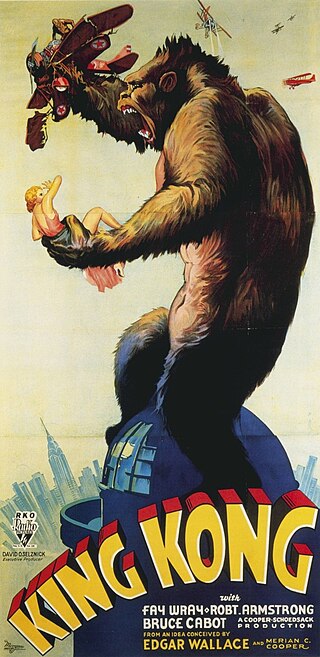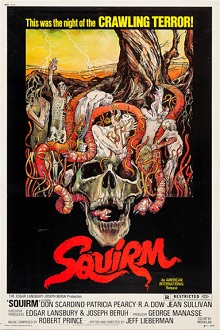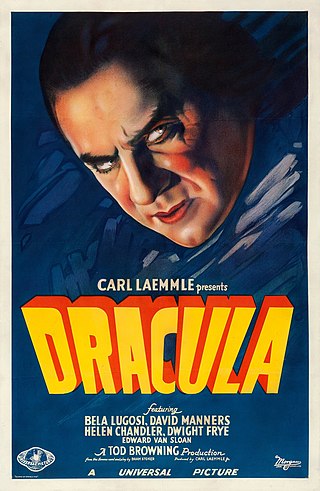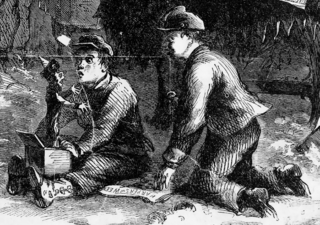Related Research Articles

The Golden Turkey Awards is a 1980 book by film critic Michael Medved and his brother Harry.

King Kong is a 1933 American pre-Code adventure romance monster film directed and produced by Merian C. Cooper and Ernest B. Schoedsack, with special effects by Willis H. O'Brien and music by Max Steiner. Produced and distributed by RKO Radio Pictures, it is the first film in the King Kong franchise. The film stars Fay Wray, Robert Armstrong and Bruce Cabot. The film follows a giant ape dubbed Kong who is offered a beautiful young woman as a sacrifice.

The Day the Earth Stood Still is a 1951 American science fiction film from 20th Century Fox, produced by Julian Blaustein and directed by Robert Wise. It stars Michael Rennie, Patricia Neal, Hugh Marlowe, Sam Jaffe, Billy Gray, Frances Bavier and Lock Martin. The screenplay was written by Edmund H. North, based on the 1940 science fiction short story "Farewell to the Master" by Harry Bates. The film score was composed by Bernard Herrmann. Set in the Cold War during the early stages of the nuclear arms race, the storyline involves a humanoid alien visitor who comes to Earth, accompanied by a powerful robot, to deliver an important message that will affect the entire human race. In 1995, the film was selected for preservation in the United States National Film Registry as "culturally, historically, or aesthetically significant".
A slasher film is a subgenre of horror films involving a killer or a group of killers stalking and murdering a group of people, usually by use of bladed or sharp tools. Although the term "slasher" may occasionally be used informally as a generic term for any horror film involving murder, film analysts cite an established set of characteristics which set slasher films apart from other horror subgenres, such as monster movies, splatter films, supernatural and psychological horror films.
A hidden message is information that is not immediately noticeable, and that must be discovered or uncovered and interpreted before it can be known. Hidden messages include backwards audio messages, hidden visual messages and symbolic or cryptic codes such as a crossword or cipher. Although there are many legitimate examples of hidden messages created with techniques such as backmasking and steganography, many so-called hidden messages are merely fanciful imaginings or apophany.
Amicus Productions was a British film production company, based at Shepperton Studios, England, active between 1962 and 1977. It was founded by American producers and screenwriters Milton Subotsky and Max Rosenberg.

An exploitation film is a film that tries to succeed financially by exploiting current trends, niche genres, or lurid content. Exploitation films are generally low-quality "B movies", though some set trends, attract critical attention, become historically important, and even gain a cult following.

The Fifty Worst Films of All Time (and How They Got That Way) is a 1978 book by Harry Medved with Randy Dreyfuss. Despite its broad title, it presents the authors' choices for the 50 worst sound films made or distributed in the United States. Each film's entry includes a story synopsis, the authors' opinions of its quality, and a selection of contemporary reviews of the film.
Something Weird Video is an American film distributor company based in Seattle, Washington. They specialize in exploitation B to Z films, particularly the works of Harry Novak, Doris Wishman, David F. Friedman and Herschell Gordon Lewis.

Gerald Mohr was an American radio, film, and television character actor and frequent leading man, who appeared in more than 500 radio plays, 73 films, and over 100 television shows.

The Screaming Skull is a 1958 independently made American black-and-white horror film, produced by John Kneubuhl and directed by Alex Nicol, starring John Hudson, Peggy Webber, Russ Conway, Tony Johnson, and Nicol. The Screaming Skull marked Nicol's directorial debut; he decided to try it because he felt that he was not acting in the roles which he wanted. The film was distributed by American International Pictures as a double feature in different markets with either Earth vs. the Spider or Terror from the Year 5000.

Terror in the Haunted House is a 1958 American horror film produced by William S. Edwards and directed by Harold Daniels. The movie stars Gerald Mohr, Cathy O'Donnell, William Ching, and John Qualen. Its plot follows newlywed Sheila, who moves with her husband Philp into a rural Florida mansion which she is horrified to discover was the subject of a recurring nightmare for which she sought psychiatric care in Switzerland. The house is the key to events that have haunted her husband's family for a generation, and Philip's intent is to use her mind to unlock the mystery.

Squirm is a 1976 American natural horror film written and directed by Jeff Lieberman in his feature-film directing debut, starring Don Scardino, Patricia Pearcy, R. A. Dow, Jean Sullivan, Peter MacLean, Fran Higgins and William Newman. The film takes place in the fictional town of Fly Creek, Georgia, which becomes infested with carnivorous worms after an electrical storm. Lieberman's script is based on a childhood incident in which his brother fed electricity into a patch of earth, causing earthworms to rise to the surface.

Milton Subotsky was an American film and television writer and producer. In 1964, he founded Amicus Productions with Max J. Rosenberg. Amicus means "friend" in Latin. The partnership produced low-budget science fiction and horror films in the United Kingdom.

Still motion is a method of displaying many images one after another as frames, using the technique of "frame-by-frame", similar to the concept of stop motion. The difference between this and stop motion, however, is that still motion is not a method of animation and therefore, each frame does not have to be related in any way. It is a style of editing which is usually used to create an intense effect.
Backmasking is a recording technique in which a message is recorded backward onto a track that is meant to be played forward. It is a deliberate process, whereas a message found through phonetic reversal may be unintentional.

Supernatural horror film is a film genre that combines aspects of supernatural film and horror film. Supernatural occurrences in such films often include ghosts and demons, and many supernatural horror films have elements of religion. Common themes in the genre are the afterlife, the Devil, and demonic possession. Not all supernatural horror films focus on religion, and they can have "more vivid and gruesome violence".
While the effectiveness of subliminal messages is often overstated in popular culture, its history in television shows, movies, music and novels has long led to many cultural idioms that persist today.

"How to Control the Nation" is the second special in British psychological illusionist Derren Brown's The Events television series. It features Brown playing a short "subliminal film" intended to make viewers who watched the programme unable to stand up from their seats. Although most segments were pre-recorded and showed Brown investigating and performing subliminal techniques, the show was partially broadcast live, and Brown spoke with viewers who had been affected by the film on the telephone.

A jump scare is a scaring technique used in media, particularly in films such as horror films and video games such as horror games, intended to scare the viewer by surprising them with an abrupt change in image or event, usually co-occurring with a loud, jarring sound. The jump scare has been described as "one of the most basic building blocks of horror movies". Jump scares can startle the viewer by appearing at a point in the film where the soundtrack is quiet and the viewer is not expecting anything alarming to happen, or can be the sudden payoff to a long period of suspense.
References
- ↑ HEFFERNAN, KEVIN (2002). "The Hypnosis Horror Films of the 1950s: Genre Texts and Industrial Context". Journal of Film and Video. 54 (2/3): 56–70. ISSN 0742-4671. JSTOR 20688380.
- ↑ Jane Killick (1998). The coming of shadows. Internet Archive. Ballantine Pub. Group. ISBN 978-0-345-42448-8.
- ↑ "I Attended the First Psychorama Sleepover and Became a Fashion Icon". Film School Rejects. 2019-06-26. Retrieved 2021-07-12.
- Medved, Michael; Harry Medved (1980). The Golden Turkey Awards . Putnam. ISBN 978-0-399-50463-1.